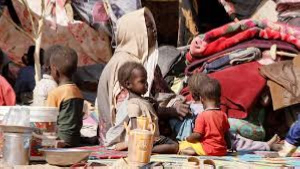The Institute of Statistical Social and Economic Research (ISSER) of the University of Ghana’s 2012 Ghana Social Development Outlook Report says the gap between the poorest and the richest Ghanaians is widening.
It said Ghana has witness 50% poverty reduction since 1990s, however 25% of Ghanaians are still living in poverty.
The report which was launched on Wednesday in Accra said there are consistent improvements in access to primary education in Ghana, while 46 percent of Ghanaian adults are illiterate.
It said 66 percent of Ghanaian households have access to electricity and 44.5 percent of Ghanaians live in a one-room dwelling.
The report said labour markets absorb only 20 percent of young school leavers with tertiary education, 24 % of children engaged in worst forms of child labour, whereas women are only 8.2 percent of formal sector employees compared with 25 percent of men.
Professor Dzodzi Tsikata, Coordinator of the Report, said it would contribute to critical analyses of social policies and policy outcomes in three broad areas – quality of life, material conditions, and sustainability.
She said the report is a tool for assessing progress and ascertaining the extent to which social development policies translate into meaningful reality for citizens and would serve as a reliable record of the state of social development in Ghana
The report said the three northern regions and rural areas have highest social development deficits and the highest fertility rates and dependency ratios.
It calls for a rethink of social development policies, taking into account shared values of respect for human rights, equity and social justice.
It said social sector spending is an investment in the economy and society and not charity or unproductive expenditure.
The report said education witnessed improvements in enrolment, concerns over quality, equity and access but the nation has a youthful population with an ageing bulge.
It said there is gradual health improvement but major problems of access, quality, financing and personnel persist with a ratio of 10 physicians per 100,000 persons.
The report said water and sanitation deficits are a serious threat to health and education outcomes.
It said the nation has low-end housing deficits; creating urban slums with endemic problems; unemployment and precarious work a threat to social development and land tenure insecurities: hindering rural livelihood and social development.
It said energy supply was inadequate for a growing population and economy.
Prof. Kweku Osam, Acting Vice Chancellor and Pro-Vice Chancellor, said the launch of the report was part of activities marking the 66th anniversary celebration of the University.
He said the University was using the anniversary event to rethink of how to position itself in higher education as a leading research institution in the country.
He said the University would in the near future ensure that doctorate programmes have one year for course work and two years for academic research.
Prof Clement Ahiadeke, Director of ISSER, said the Institute has since 1992 maintained the envious position as a leading research institution in the country.
He commended the International Development research Centre (IDRC) of Canada and the Canadian government for funding the project.
Mr Paul Victor Obeng, Senior Adviser to the President and Chairman of the National Development Planning Commission (NDPC) who chaired the function, assured ISSER that their report would be used by the NDPC as a working tool.
Mr Kamil Kamaludeen, Country Director of the United Nations Development Programme who formally launched the Report, recommended that all interested in development issues of the country should get a copy.
Business News of Thursday, 14 March 2013
Source: GNA













